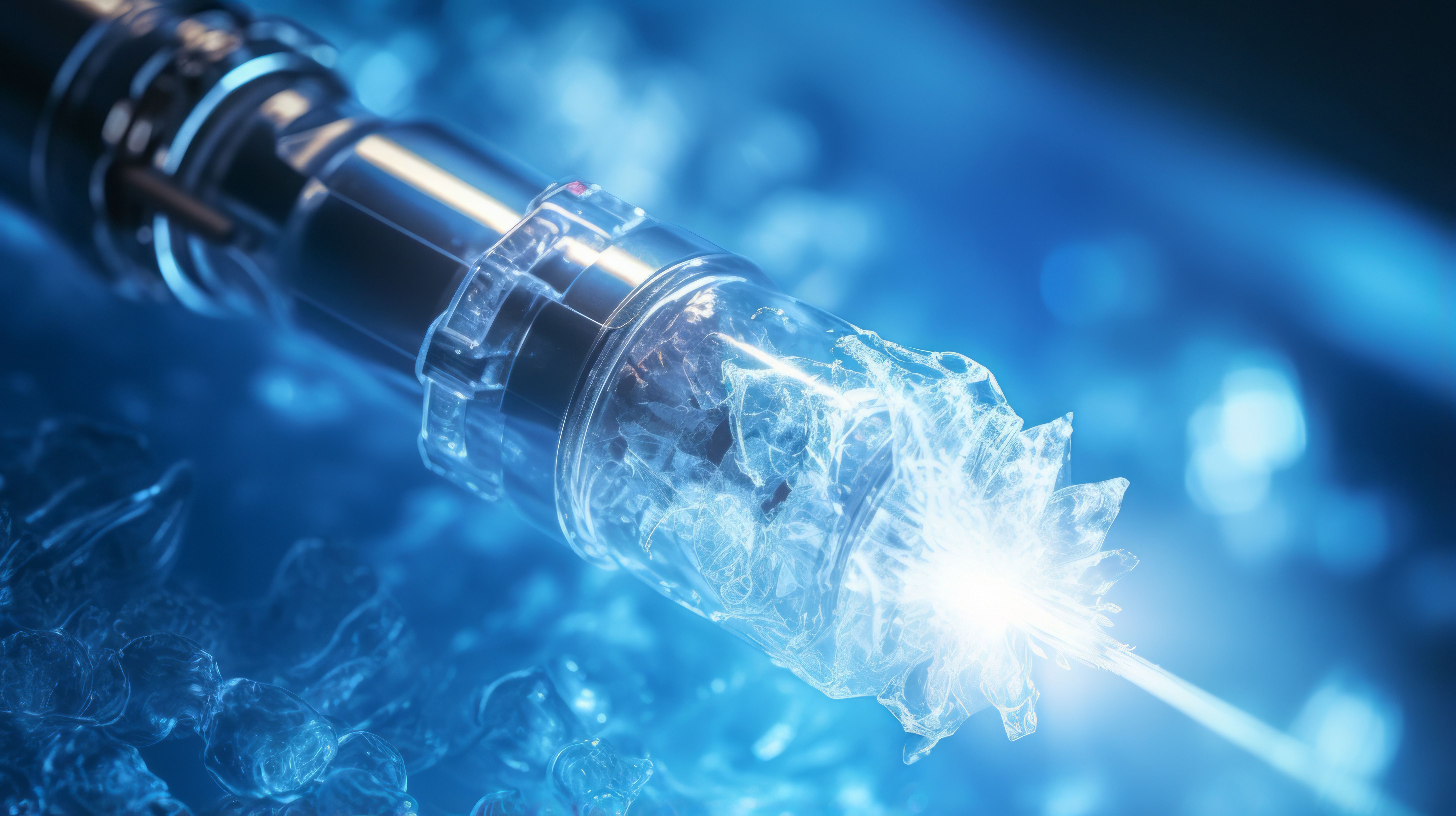- Center on Health Equity & Access
- Clinical
- Health Care Cost
- Health Care Delivery
- Insurance
- Policy
- Technology
- Value-Based Care
Cryoablation Exhibits Advantages as Minimally Invasive Option for Early Breast Cancer
While offering advantages like faster recovery and high patient satisfaction, cryoablation for the treatment of early-stage breast cancer is still under investigation for effectiveness and requires further research for wider adoption.
Cryoprobe. | Image Credit: Alexander Kurilchik - stock.adobe.com

According to a narrative review, there are advantages and disadvantages to using cryoablation as a treatment option for patients with early-stage breast cancer as a means to destroy benign lesions, small breast cancers, or focal sites of metastatic disease.
Cryoablation is attractive to patients because it is a minimally invasive procedure that requires percutaneous techniques of extreme cold through cryoprobe insertion into the targeted breast tissue. Once the cryoprobe is inserted, a rotation of 2 freeze thaw cycles form an ice ball that surrounds and erodes the targeted lesion. While clinical trials have approved cryoablation for fibroadenomatous lesions, the approval for breast cancer lesions continues to be experimented on.
A significant advantage to cryoablation is the time it takes to undergo the procedure, which ranges from 25 minutes to a half hour. Compared with surgery, cryoablation is less intrusive and does not cause pain during or after the procedure. Patients with early-stage breast cancer that are not ideal candidates for surgery or those that refuse surgery are often recommended cryoablation.
Additionally, the cost of cryoablation is drastically lower than surgery and the recovery period. The cost effectiveness allows patients to achieve greater levels of quality of life in patients with early-stage and low-risk breast cancer. Some studies found the overall long-term patient satisfaction rate was around a promising 97%.
Disadvantages of cryoablation include minor adverse effects such as bleeding, frostbite, skin or chest wall injury, infection, local swelling, ecchymosis, and incomplete or impossible treatment based on the location of the targeted lesion. In some cases, cryoablation can be costly due to the expense of argon gas and size of the cylindrical container it comes in.
Researchers reviewed studies that found combination therapies, such as cryoablation and immunotherapy, express potential to address the immune treatment of neoplastic lesions. Once the ice ball forms around the lesion, the tumor cells release tumor antigens, nuclear proteins, and proinflammatory cytokines. The natural immune system response is triggered when macrophages, natural killer cells, and granulocytes stimulate natural immune responses. This allows the release of antigen presenting cells (APCs) that ultimately reach the cryoablated tissue.
A study from 2017 investigated Fe304 nanoparticles throughout cryoablative treatment of MCF-7 cancer cells. It was found that intracellular ice formation, the mechanism of cell apoptosis and recrystallization, was enhanced by Fe304. When Fe304 increased in concentration, MCF-7 tumor cells had an enhanced ability to destroy it.
The role of aquaporin channels and their potential effects of cryotherapy regulation that could be exploited in treatment was examined in a 2021 study. During cryoablation, damaged cancer cells can lead to water leakage. An increase in cell proliferation and invasion are evidently associated with water channels. Several aquaporins (AQP1, AQP3, AQP5) were analyzed for the cellular arrangement they had following cryoablation in cultured breast cancer cells (MCF-7 and MDA-MB-231).
In post cryoablation follow up, magnetic resonance imaging (MRI) is the most effective tool in predicting the complete response to ablation. However, some of the reviewed studies did not find a particular pattern between the analysis of cryoablation parameters, MRI results, lesion, and pathological characteristics. Unfortunately, imaging techniques like contrast-enhanced mammography have not been identified in cryoablation therapy.
It is beneficial to understand the process of AQP1 while recognizing the increased cell damage during cryoablation to avoid any increased therapy failure rates in breast cancer treatment. The narrative review offered perspective on systemic and local therapies, like cryoablation, highlighting the promising therapeutic advantages they have on patients. Moving forward, cryoablation must be tested among large prospective studies to be accurately compared with traditional open surgery.
Reference
Galati F, Marra A, Cicciarelli F, et al. Cryoablation for the treatment of breast cancer: immunological implications and future perspectives. Utopia or reality? Radiol Med. 2024;129:222-228. doi:10.1007/s11547-024-01769-z
